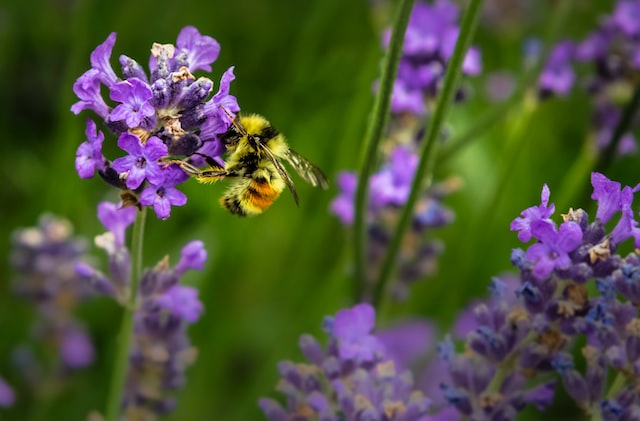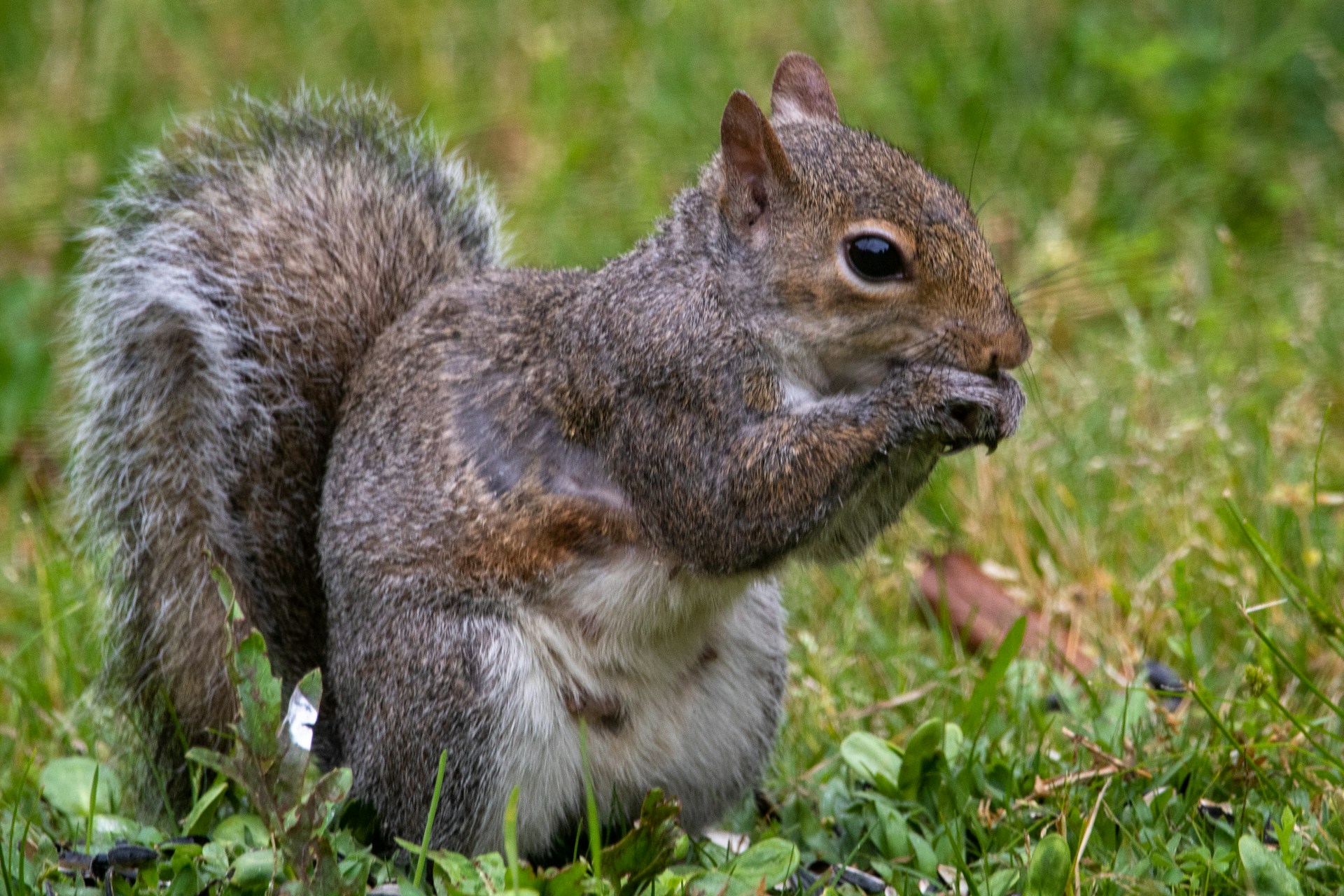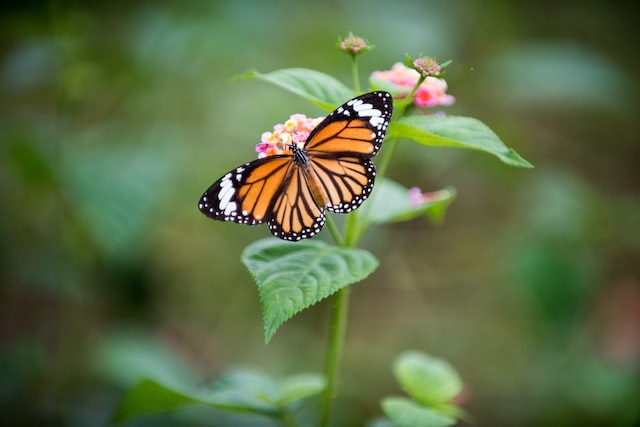With spring getting closer, it’s time to start thinking of ways to encourage children to spend time outdoors and engage in physical activity. We all want our children to have a safe and fun place to play, explore and develop their physical abilities. Having a backyard playground is an excellent way to accomplish this while also providing a space for family bonding and outdoor entertainment. In this post, we’ll discuss some of the best backyard playground tips with the experts to ensure you make the most out of your backyard space.
Tips for keeping kids safe on the playground
The backyard playground is a haven for children, offering a space for fun, imagination, and physical activity. While it’s essential for kids to explore and play freely, safety remains a top priority for parents. With the right precautions and the integration of home security systems, you can create a secure environment for your children to enjoy their playtime.
Tips to create a kid-friendly backyard playground
Creating a kid-friendly backyard is a great way to provide a safe and enjoyable outdoor environment for your children. It can be a challenging home project, and the whole family can get involved. Following these tips can help you plan and build a fantastic backyard playground your kids will love.
Provide age-appropriate play equipment: Install age-appropriate play equipment such as swings, slides, climbing frames, and sandboxes. Ensure that the equipment is properly maintained and that the surfaces underneath are safe and soft, such as rubber mulch or sand.
Create a designated play area: Set aside a designated play area in your backyard, away from any potential hazards such as swimming pools or gardens with dangerous plants. This area can be fenced off to keep your children safe and contained.
Add some greenery: Incorporate some greenery and flowers into your backyard to make it more attractive and interesting for your children. Consider planting some fruit or vegetable plants that your kids can help care for and harvest.
Create a shaded area: Create a shaded area in your backyard to protect your children from the sun’s harmful rays. This can be done with a pergola, umbrella, or even a tree.
Provide a space for outdoor dining: Set up an outdoor dining area where your family can enjoy meals together. This can be a simple picnic table or a more elaborate outdoor kitchen.
Incorporate water features: Incorporate safe water features such as a small fountain or splash pad to keep your children cool and entertained on hot days.
Make it safe: Ensure that your backyard is safe by removing any potential hazards such as sharp objects, poisonous plants, or chemicals. Keep all tools and equipment locked away and out of reach of your children.
Here’s what the experts say to help you create a kid-friendly backyard playground:
Grass, wood mulch, or rubber mulch, which is better?
Playsets have increased in price over the years, and choosing the right mulch may help save you unnecessary costs during the lifespan of your investment.
Now let’s get into the “thick” of things. Natural grass is not thick enough cushion to protect kids when they fall. Wood mulch does have better shock absorbency, but ASTM safety standards require a minimum wood playground mulch depth of 12” to protect children during falls. Natural qualities of wood mulch make it more susceptible to mold, insects, and water retention and additional top-offs may end up costing you more in the long run.
Here at Patiova we recommend Rubber Mulch to our customers. Rubber Mulch has exceptional longevity, up to a 12-year color guarantee and a 12’ fall protection surface. A depth as little 3” provides the recommended ground cover of fall protection for most backyard playground systems. Better yet – it does not float, absorb water, blow away, decompose, compact, attract animals & insects or promote growth of mold & fungus.
Tires really? The Rubber Mulch we recommend has a 4 unique, state-of-the art magnet pull during the manufacturing process to ensure no steel content. With many Rubber Mulch options on the market, we recommend an option that is GSA, ASTM and IPMEA Certified. After all, the safety of our youngest friends is always top priority!
Lisa Donmoyer – Patiova
What are some tips to keep your kids engaged with backyard spring activities?
As the weather warms up and spring arrives, parents may be wondering how to keep their kids entertained and engaged outdoors. Backyard activities are a great way to get some fresh air and exercise while spending quality time as a family. Here are some tips to keep your kids engaged with backyard spring activities:
Plan: Make a list of activities that your kids will enjoy and have the necessary materials ready in advance. This will help to avoid any last-minute scrambling or disappointment.
Get creative: There are many simple and fun activities that can be done in your backyard playground, such as painting rocks, making bird feeders, or creating a nature scavenger hunt.
Involve your kids in planning: Ask your kids what activities they would like to do and involve them in the planning process. This will give them a sense of ownership and excitement for the upcoming activities.
Mix it up: Don’t rely on the same activities every day. Switch things up by trying different games, sports, or crafts.
Make it a family affair: Participate in the activities with your kids and have fun together as a family. This will create lasting memories and strengthen your bond.
Overall, keeping your kids engaged with backyard spring activities can be a fun and rewarding experience. With a little planning and creativity, you can create an enjoyable outdoor environment for your children to explore and play.
My Home-Based Life team – My Home-Based Life
Benefits to having a backyard playground for your children
- Encourages outdoor play: Having backyard playground encourages your children to spend more time playing outside, which is important for their physical and mental health.
- Promotes physical activity: Playgrounds provide opportunities for children to engage in physical activity such as climbing, swinging, and running, which is crucial for their physical development.
- Enhances motor skills: The different types of equipment found in playgrounds help children enhance their motor skills and coordination.
- Stimulates imagination and creativity: Playgrounds provide an environment where children can let their imagination run wild and create their own games and stories.
- Develops social skills: Playgrounds are a great place for children to interact with each other and develop important social skills such as sharing, taking turns, and cooperation.
- Boosts cognitive development: Outdoor play has been shown to improve cognitive development and academic performance in children.
- Reduces stress: Playing outside and engaging in physical activity can help reduce stress and improve mood in children.
Here are some tips from the experts to help you create a backyard playground for your kids.
What are some tips for creating a backyard playground for children of different ages?
I’d suggest adding natural materials for play to make a backyard that’s engaging for kids of all ages. These materials might include sand, water, sculpted earth, tree parts, boulders, and kid-friendly plants. Logs and stumps of various heights and diameters can be used to climb on, balance on, sit on, and to jump off. Stumps and logs can be sanded and sealed to prolong their life, but they will eventually decompose. For more long-lived nature play elements, or to add textural variety, consider boulders that can be set in the ground for climbing and sitting on. Another way to add play value is to incorporate some variety in the terrain. If you already have a hill, use that for play that involves moving up and down. If you don’t have a hill, a dirt pile adds a huge amount of play value for climbing up and sliding down, as well as digging and engineering. Loose parts is the term used for anything that kids can move and manipulate in play. Adding loose parts like sticks, tree cookies, crates, planks, even cardboard, and fabric are great ways to encourage building and imaginary play. Check out my book Nature Play at Home: Creating Spaces that Connect Children to the Natural World for more ideas!
Nancy Striniste – Early Space
Would you recommend buying playground sets or DIY playing stations with your kids?
Parents often think that they need all the new fancy things to keep their children busy. When in reality, kids just need a playground set to call their own. They need a place that sparks creativity and imagination without being told or shown what to play.
A backyard playground set can be a place to swing high enough to touch the clouds, a clubhouse to call base when the neighbor kids come to play tag, or a pirate ship sailing them deep into the ocean in search of buried treasure. Kids building their imagination is something that is crucial for childhood development and they will use it throughout adulthood.
In my 18 years of experience raising my 4 kids and owning a daycare, I can tell you that children love to be inspired by each other. Let kids create their own fun car washing station or outdoor kitchen using their playground set as the basis instead of setting up a playing station that is already done for them. Children have an unbelievable imagination and what they create in play can be a memory for a lifetime.
I advise buying a good quality playground set that can last decades with only occasional maintenance instead of purchasing or making multiple playing stations that can make children feel limited playing one thing.
Kathaleen Kopf – Brilliant Little Ideas
What are the key factors to keep in mind when choosing a swing set?
Play Features
The best swing sets have a variety of play features that encourage active play. Swing sets with monkey bars challenge kids to use their upper body strength while slides provide a fun and safe way down. Climbing through a variety of platforms using their arms and legs gives kids a great cardio workout. And don’t forget about the classic belt swing which is not only great fun, but it also helps develop coordination and balance.
Yard Space
Yard size and shape also impacts what playset you should consider. Modular playsets are a great way to customize and design a set that fits your space. Best of all, custom swing sets can be easily expanded as your family grows or if a piece becomes damaged it can be replaced versus buying an entirely new swing set.
Construction
It is important to choose a swing set that is made of high-quality materials that can withstand weather and wear and tear. Look for swing sets that are made of cedar wood with powder-coated steel brackets, which are both durable and beautiful materials that will last for years.
Budget
When choosing a swing set, it is important to consider your budget. Be sure to compare features along with quality before making your final decision. Also make sure you understand costs for installation or are comfortable doing it yourself. It’s always a great idea to take your children to a local swing set dealer to figure out what play features are best for your family, your backyard, and your budget.
Chris Connors, Vice President – Backyard Adventures
What playset features are great for older kids?
There are several options that are great for older kids. We always say that a Rainbow Play System is a play set that your kids grow into, not out of.
You can start out with a Pkg II (which is the main structure of the play set with the Swing Beam) and then upgrade as your kids get older to a Pkg III (adding Monkey Bars), Pkg IV (adding a Penthouse above the Monkey Bars), or a Pkg V (adding a Spiral Slide coming out of the Penthouse).
Many of the swinging options are great for the older kids. Anything from the classic Sling Swing to the 2 or 4 Chain Tire Swing. There is also the Knotted Rope with Disc or Buoy Ball, Hammock Swing, Sky Curve Swing, and Web Swing that are great for older kids. The Castles also have the addition of a Tire Swing that is also great fun.
Monkey Bars are always great fun for kids. You can even add on some Dual Shimmy Bars or even a Ninja Training Kit.
Adding a Penthouse on top of the Monkey Bars can create a nice little hideaway for the older kids. The Penthouse also allows for some additional options to be added, such as the Spiral Slides.
Janell Lane – Rainbow Play Systems
Keeping your kids safe in your backyard
Installing outdoor cameras to monitor your kids while they play in the backyard can be a good way to ensure their safety. Here are some steps you can follow:
- Determine the best locations: Identify the best locations for the cameras to ensure that you have a clear view of the areas where your kids play.
- Choose the type of camera: There are various types of cameras available in the market, such as wired, wireless, and battery-powered. Choose the one that best fits your needs.
- Purchase the cameras: Once you have decided on the type of camera, purchase the necessary cameras along with any other equipment required for installation.
- Install the cameras: Follow the manufacturer’s instructions to install the cameras. If you are not comfortable with doing it yourself, consider hiring a professional.
- Set up the monitoring system: Set up the monitoring system to view the footage from the cameras. You can use a mobile app or a dedicated monitor for this purpose.
- Test the system: Once everything is set up, test the system to ensure that it is working correctly.
- Educate your kids: Explain to your kids the purpose of the cameras and the rules around them. It is important to respect their privacy and let them know that the cameras are for their safety.
Remember to also check the laws and regulations in your area regarding the installation of cameras. It is also important to ensure that the cameras are not pointed at your neighbor’s property or any public areas to avoid any legal issues. Check out these tips from the experts to ensure your kids safety while they play outside.
Children’s safety while playing in the backyard; at what age can I leave them to play alone?
An important part of a child’s development is learning how to play independently. You can start encouraging solitary play from an early age. Kids love being outside, so this is a good time to reinforce independent play. A fenced yard that can be seen from inside the home is ideal when leaving a young child alone in the backyard. A child over the age of 3 can safely play in a “contained” area of your backyard. Be sure to provide age-appropriate toys that do not require constant supervision. Start by watching your child from a distance to see what they do. Once you know that your child isn’t going to climb the fence and escape, let them play alone for 15 minutes. Increase the time based on your level of comfort. If you have more than one child make sure that they get along and that the older one is not responsible for the younger one. Follow the same guidance as with one child. Letting your child play with some organic materials such as sticks, small rocks, grass and even dirt (think mud pies and an outdoor play kitchen) is extremely important for many aspects of development, including immunity, so embrace these materials!
Tanya Thibodeau – Seeme & Liz
What materials are best for swing sets in terms of durability and safety?
Powder-coated galvanized steel is the superior material for swing sets due to its unmatched durability and safety features. Unlike wood swing sets, which require regular re-staining to prevent decay and maintain structural integrity, powder-coated galvanized steel requires far less maintenance, making it a more convenient choice for most families. The powder coating protects the steel and resists rust for the product’s entire life. No sealing or re-coating is required. Additionally, the strength of galvanized steel allows the swing set to support substantial weight and withstand vigorous play, providing a safe and reliable environment for children. This combination of rust resistance, low maintenance, and robust support makes powder-coated galvanized steel ideal for long-lasting, safe swing sets.
Daniel Lipschitz – Gobaplay
What are some safety pool tips for toddlers?
There are many options on the market for toddler security, but adult supervision is paramount.
Automated covers keep toddlers out of the pool, if someone closes the cover after use. There’s also the issue of water that accumulates on top of the cover after a heavy rain. If it’s not drained off, there’s a drowning hazard for young children.
Fences are the best protection against toddlers getting into a pool unsupervised. Making sure the gates are properly maintained and locks in place help prevent unwanted access to the pool area.
There are alarms available as well. Wave detectors and water sensitive bracelets can be purchased, but the technology is not perfect (batteries can die, wind can cause waves in pool alarming people for no reason) so again, adult supervision is the most reliable protection for young children around pools.
Marc Luff – Betz Pools
What safety precautions should you take when installing a trampoline in your backyard?
When installing an inground trampoline in your backyard playground, there are a few precautions you want to make to ensure you’re doing it the right way and the safest way. First, make sure you buy a proper inground trampoline. Often people think that they can simply just take their budget above-ground trampoline and bury it. This leads to failed retaining walls, bent trampoline frames, and creates potential hazards and doesn’t hold up well over time. Second, you will want to make sure your trampoline spot is level and at least 5′ away from any hard objects, concrete, trees, or fences. If it is, we recommend a safety enclosure net system to protect jumpers from colliding with these objects. Third, and last thing to consider when safely installing a trampoline inground is to make sure you follow the manufacturers recommendations on hole depths, shelf widths, and assembly instructions. Refer to your trampoline safety manual as well for how to jump and use your inground trampoline. Inground trampolines can be a very fun addition to your backyard playground when installed properly and used in a safe manner. Keep in mind when shopping for an inground trampoline to review product warranty information and reviews to find the best inground trampoline for your family.
Brad Mills – Trampolines Inground
What are the best outdoor toys for toddlers?
Indoors or out, the best play gives kids a balance of experiences that foster imagination, social interaction, and physical play. the advantage of outdoor is that toys can be larger—and even a bit messy. As you create your playground, consider these areas:
· Gross Motor Development—Climbing structures, toddler versions of “big kid” sports, and even basics like balls keep kids active and those muscles moving and developing. These have the advantage of also building confidence as toddlers feel more comfortable in—and familiar with—their bodies.
· Locomotion—Toddlers love to be “on the go.” Scooters and balance bikes are both fun and empowering for kids. Ride-ons, whether kid- or battery-powered are exciting and encourage imaginative play. What toddler doesn’t want to be in the driver’s seat? There are many great options available at a wide variety of prices, but all of them deliver the play value.
· Building and Creative Play—The classic sandbox is always a good choice. The building fosters imagination and open-ended, narrative-based play as kids make up stories about their creations.
· Grown Up Fun—If you’re a gardener, there are toddler versions of gardening tools, so the kids can “work” alongside you. They love feeling grown up.
· Get Wet—You don’t need a lot to create a waterpark. There are basic wading pools that are very reasonable, and there are many different types of sprinklers that attach to the hose—for drenching or games.
It doesn’t have to cost a lot to create big fun for toddlers. And don’t forget the sunblock!
Christopher Byrne – The Toy Guy
How can I maintain and keep my backyard playground safe over time?
Maintenance frequency:
You should have your playset quick maintenance checked once a year and more intensive maintenance at least every three years.
Wash:
Over time, your play structure will accumulate dirt. Wash away layers of dirt with a pressure washer or water and a rag. Remember that after you have thoroughly washed the wood in your playground, you will need to apply a coat of paint or sealant as it dries so that the wood in your playground does not dry out, crack, or become easily damaged by natural factors.
Ground safety:
During the installation of your playground, your installer will check that the ground is level and that your structure is in place. But over time, your garden landscape can change. When maintaining your play structure, check for holes, rocks, trees, or other debris in the yard that could make the area around your structure unsafe.
Hardware test:
Your playground consists of many different pieces of hardware that can wear out or come loose over time. Check the screws in each wooden joint and any hardware your child uses to pull, hang, grab, or swing. Tighten loose screws and replace worn wires, handles, or hardware.
Use putty:
Like sealant on your deck, preserving and protecting the wood in your playground is one of the most effective ways to keep the wood strong and durable into the future. Sealants prevent water, dirt, and insects from entering the wood of your playground and damaging the structure. Look for sealants that are designed to be wear-resistant and safe for children.
Sara Jin – Big Elephant Play
A backyard playground can be a wonderful addition to any home, providing children with a safe and enjoyable space to explore and have fun. Always keep in mind safety is the number one priority, and be on the lookout for age-appropriate equipment like a backyard swing set when building your playground. With the right planning, materials, and design, you can create a backyard playground that your kids will love.




